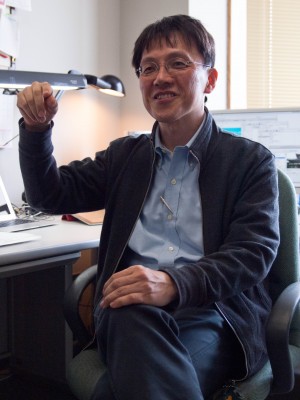Research projects in high-energy physics tend to be on larger scales, since they require huge experimental facilities. The realisation of such large-scale projects requires an enormous amount of long-term preparation, and also a big budget. That’s why high-energy physicists have decided the priorities for the future experiments by community-wide discussions.
On 8 August, the Japanese high-energy physics community published the English version of their final report of the recommendations for the future of high-energy physics in Japan. This report was prepared by the subcommittee on future projects of high-energy physics chaired by Toshinori Mori, professor at the University of Tokyo. This committee made its recommendations concerning large-scale projects, which comprise the core of future high-energy physics research in Japan.
The recommendation endorsed two large-scale projects:
- Should a new particle such as a Higgs boson with a mass below approximately 1 TeV be confirmed at LHC, Japan should take the leadership role in an early realization of an e+e– linear collider. In particular, if the particle is light, experiments at low collision energy should be started at the earliest possible time. In parallel, continuous studies on new physics should be pursued for both LHC and the upgraded LHC version. Should the energy scale of new particles/physics be higher, accelerator R&D should be strengthened in order to realize the necessary collision energy.
- Should the neutrino mixing angle θ13 be confirmed as large, Japan should aim to realize a large-scale neutrino detector through international cooperation, accompanied by the necessary reinforcement of accelerator intensity, so allowing studies on CP symmetry through neutrino oscillations. This new large-scale neutrino detector should have sufficient sensitivity to allow the search for proton decays, which would be direct evidence of Grand Unified Theories.
The original report was submitted on 11 February. Reports of this sort have been published twice in the past, at intervals of about ten years.
“We publish the recommendation when a new project is about to start. It is a time to think about the next project,” said Mori. He says that the importance of those two projects was widely recognised far before the committee started the editing process of this report. “In this report, we clearly stated the physics conditions to be satisfied towards the realisation of the projects,” said Mori.
The condition for the e+e– linear collider – “Should a new particle such as a Higgs boson with a mass below approximately 1 TeV be confirmed at LHC” – was satisfied on 4 July, by the declaration of the new particle discovery at CERN. Also, the condition set for the neutrino experiment, neutrino mixing angle θ13 be confirmed, had been cleared already by the world’s neutrino experiments such as DayaBay, RENO, T2K and Double Chooz, just after the submission of the original report.
“The committee envisages that both projects are equally important, and should be driven forward. But this does not mean that Japan should ‘host’ both projects. We need to discuss further on the priority for what Japan should host,” said Mori.
The subcommittee was set up about three years ago. Most of the members are not specialised in ILC studies, and many young scientists were selected as subcommittee members. So, the subcommittee organised numerous study sessions to learn not only about linear colliders, but also high-energy physics research at large.
Some of the subcommittee members were doubtful whether the accelerator technologies are mature enough to realise the ILC. “On this question, the subcommittee asked the specialists at KEK to explain the status of development blow by blow. Now we know that the degree of the maturity of the accelerator design is much higher than any accelerator built in the past at the time of the approval,” said Mori.
The original recommendation report was discussed by its umbrella organisation, Japan Association of High Energy Physicists, at their meeting held in March and officially approved. In May, a new body was established to promote the linear collider project as a pan-Japanese community’s effort. This new body “ILC Strategy Council” consists of 11 scientists across many different research fields in high energy physics. “So far, accelerator development for the linear collider has been led by KEK, and physics and detector studies were carried out by collaborations among universities. This new body will act as a central part to integrate all the activities toward the linear collider in Japan,” said Satoru Yamashita of University of Tokyo who chairs the new body. “We will also communicate with industry and government to make this activity into true country-wide effort,” he said.


Recent Comments